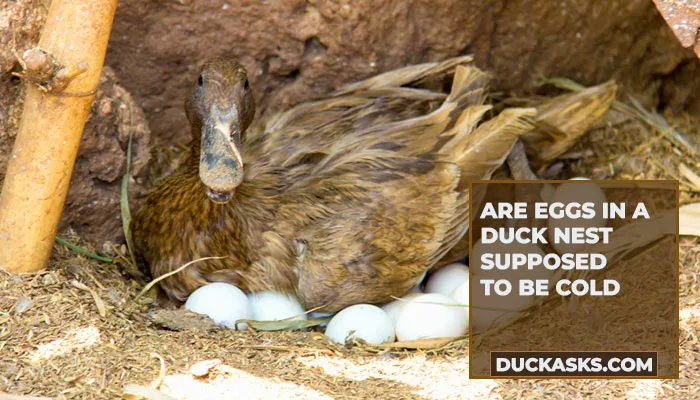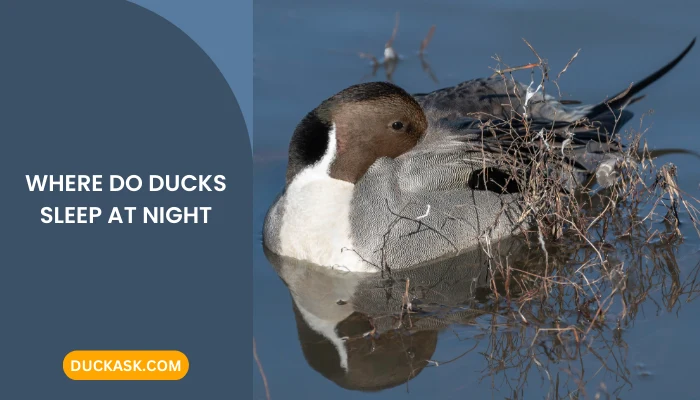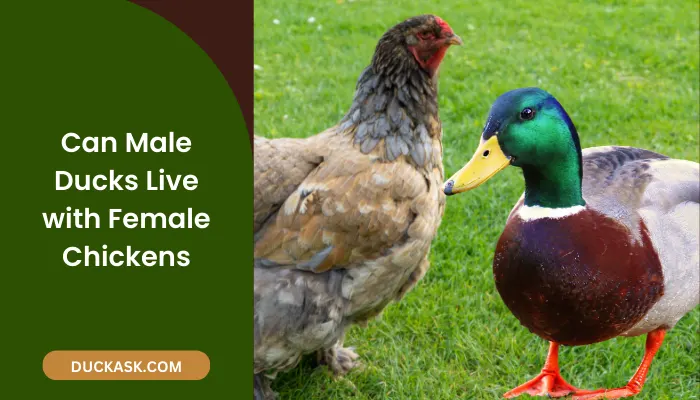Are Ducks Migratory Birds?
Ducks are often seen migrating to nearer warmer areas during winter so that they can be safe from cold and live the winter months comfortably.
But do all varieties of ducks migrate? And are ducks migratory birds in general?
Basically, the migration tendency of ducks depends on the weather conditions of their natural habitat. When the temperature goes down from their cold-tolerance level and they experience a shortage of food and warm shelter, most of them prefer migrating to southern warmer regions.
In this article, we have tried to cover every factor related to the migration tendency of ducks. Besides, their preferable areas of migration are also mentioned here.
Want to learn more about ducks habitat:
Why Do Ducks Migrate?
Migrating tendencies among ducks mostly vary depending on different weather conditions. They are seasonal migrating birds and the main reason behind their migration is the scarcity of food and declining open water sources during winter.
Finding Foods
Duck food is mostly found in summer and wild ducks don’t have many food sources during the snowy and windy weather in winter. Migrating to a mild winter environment makes it easier for them to find food and survive.
Life Near Open Water Sources
Though some ducks have shelters for roosting, most ducks like to live near open water sources and roost while floating on the water. But during winter, most of the open water sources start freezing.
Do All Ducks Migrate?
Ducks are not fully migratory birds and not every duck migrates during winter. Often, ducks don’t want to leave their breeding habitat and go to a new environment.
So, they search for warm shelters like caves, grasses and bushes near them where they can keep themselves warm during winter.

Most of the ducks that can fly to large distances usually prefer migrating. For example, the Garganey ducks are strong flyers that fly from Europe to South Africa, covering more than 700 miles.
Mallard ducks have mixed characteristics regarding migrating, as some of the British and American Mallards tend to stay in their natural habitat. But a few of them are seen migrating to the Middle East and Central America.
Are All Species of Ducks Considered Migratory Birds?
All species of ducks are not migratory birds, as some of them mostly remain in their natural habitat and do not migrate every year. Here we have added a list of the ducks that are often considered migratory birds.
- Eurasian Wigeon
- Eurasian Teal
- Pintail Duck
- Northern Shoveller
- Garganey Duck
As ducks have mixed preferences about migrating, are there any ducks that do not migrate at all?
Basically, some mallard ducks do not migrate at all and tend to live in their breeding habitat. Besides, the Ornate Mandarin ducks are also non-migratory birds, even though some of their nearest duck species migrate every year during winter.
When Do Ducks Migrate?
Ducks have flexible migrating timings that depend on weather conditions along with their cold-tolerance level. But which is their most preferable season for migrating and what time of year do ducks migrate?
Generally, ducks migrate during winter when the temperature is extremely low and they are too cold to live in their breeding habitat. But often, some species of ducks start migrating to their destination in the spring or the end of summer.
Ducks living in colder areas like Siberia tend to migrate earlier during August because the weather in Siberia starts getting cold long before the winter season.
But the European and American ducks are seen migrating in September and October when the summer ends and winter starts.
Where Do Ducks Migrate?
Generally, ducks prefer summer and mild winter as the environment remains favorable to staying outdoors freely. So, when the climate is colder, what type of weather do ducks migrate in?
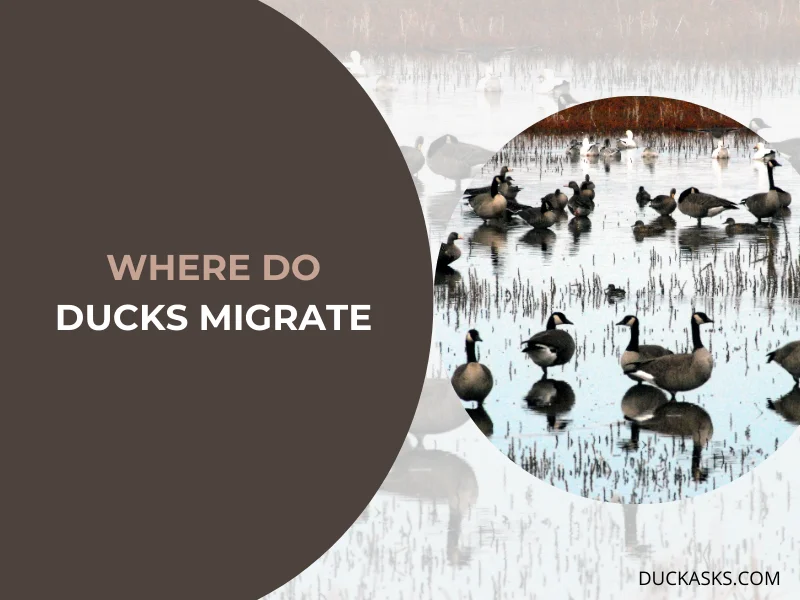
During winter, ducks move to the southern parts of the world, where the winter is not too harsh. Though their migrating area differs for each variety, they mostly migrate to several regions of the Middle East and Africa.
Migratory Mallard ducks fly to the Mediterranean from their natural habitat in Europe. Wigeon and Teal ducks migrate to the Middle East and sometimes to warmer sites in Central and South America.
A few varieties of strong-flier ducks like Garganey often cross large distances and end up in scattered areas of South Africa.
How Far Do Ducks Migrate?
The migrating distance of ducks generally varies according to their breeds because each breed has individual migrating tendencies, schedules and capabilities that affect the migrating location and distance.
But what is their average migrating distance and how long do ducks typically migrate for? Every breed of migrating ducks covers at least 100 miles while migrating to a different location.
The weak flyers can migrate within the range of a few hundred miles. But ducks with fast-flying abilities are often seen to fly more than a thousand miles to search for a favorable environment to live in during winter days.
Do Ducks Come Back to the Same Place Every Year?
Ducks have variable homing instincts and their homing tendency varies for different breeds. Often some ducks can return to their nests in the precise location where some can’t even find the area where they lived.
Most of the wood ducks, goldeneyes, canvasbacks and buffleheads can come back to their previous nesting sites. Generally, they can locate their habitat almost every year after returning from the migration areas.
On the other hand, some ducks like the blue-winged teal, have really low homing tendencies. Among the Teals, only 5%-15% can return to their habitat each year after migration.
Factors that Influence Duck Migration
Generally, ducks are into partial migration and they move to certain areas during winter. The following factors act as the driving force for ducks to leave their present habitat and migrate to a different area.
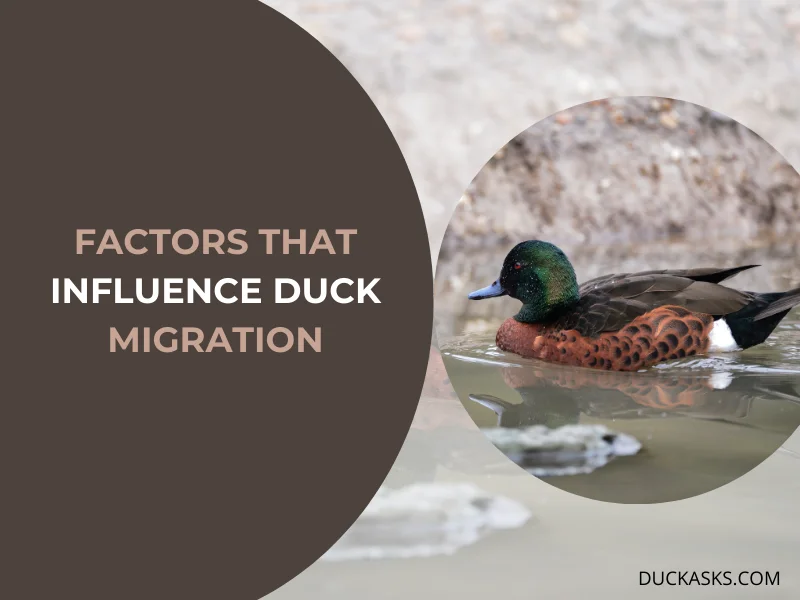
Lack of Food
During winter, most of the food sources of ducks remain buried under the snow. Some types of grains and grass can be found in certain areas, but they are mostly rare and sometimes unavailable.
So, ducks need to migrate to warm areas where they can search for food and remain healthy and safe.
Habitat Crisis
Ducks spend most of the day outdoors, whether just roaming around or floating and swimming on the water. But lakes and ponds often freeze due to cold temperatures and it gets difficult for them to survive outdoors in the winter.
Migrating to a warm region can be beneficial for them as they won’t have to worry about being too cold outdoors.
Unfavorable Breeding Environment
It can get really difficult for ducks to lay eggs and raise their babies during winter because the baby ducks remain vulnerable in this weather and might experience health risks due to severe cold.
If the ducks migrate to favorable weather, they can raise the babies well and care for them by fulfilling all their necessities.
Do Ducks Migrate by Flying?
Ducks generally migrate by flying, as migrating ducks are fast flyers and have long-distance flying abilities. They can fly at 50 miles per hour and cover around 800 miles without any breaks.
Plus, they can fly at thousands of feet altitude where the temperature is lower than the land.
Though ducks can take large flights and don’t take breaks in between, sometimes, they are seen swimming and floating on the open water sources while taking breaks.
In this meantime, often they waddle slowly and pass shorter distances on land surfaces. Migrating mallard ducks have high stamina and are capable of flying longer distances.
How Ducks Are Equipped for Migration?
As ducks need to travel longer distances while migrating, it is essential for them to be well-equipped so that they can cover these large distances with ease. These following things ducks consider to be well-equipped for migration.
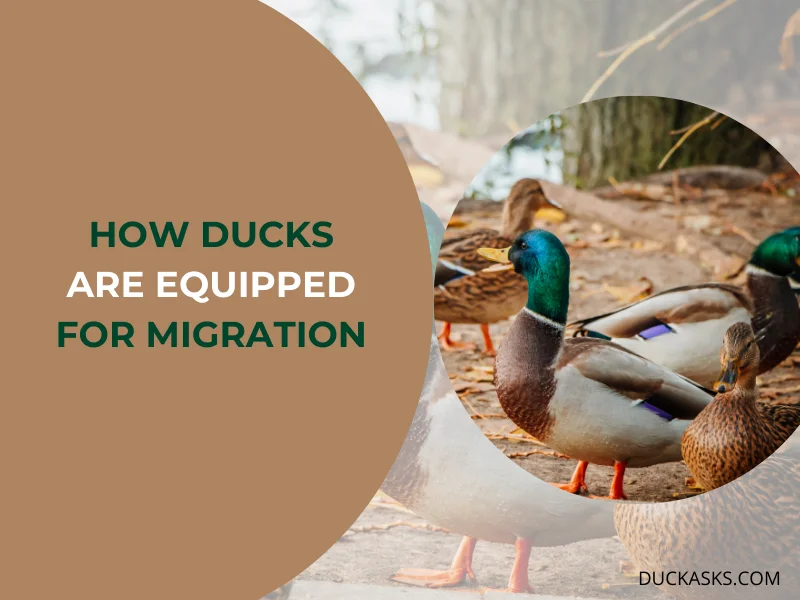
Consuming Energy Dense Foods
For flying large distances, ducks need enough energy and nutrition to be safe and healthy during flights. They generally consume large quantities of carbohydrates and proteins, such as different types of seeds and grains.
The female ducks often consume several small insects and bugs in between their flights. These bugs are rich sources of proteins and minerals that are essential for them to produce eggs.
Taking Breaks on Wetlands
Generally, ducks don’t prefer taking breaks while flying longer distances and take direct flights to their destination. But often, they take short breaks to find food and water to fuel themselves up.
Wetlands are considered fuel stations for ducks as they look for food in these areas. While being in wetlands, they waddle slowly and save energy for their next flight.
Do UK Ducks Migrate?
Not all UK ducks migrate to distant places; only a few breeds tend to fly to several parts of Africa and the Middle East. But most of the UK ducks are non-migratory and they spend the whole winter living there.
Among the 22 species of ducks living in the UK, the migratory Mallards are seen moving to the Mediterranean and Southern Europe during winter.
The non-migratory Mallards are permanent residents of the UK, while others are immigrants that migrate from other regions to the UK water lines.
Some breeds of Teals, Wigeons, Gadwalls and Pintails are duck breeds that are immigrants and stay the whole winter in the UK.
Do Ducks Migrate South?
Ducks generally migrate to southern regions of the world as these areas are close to the equator and the weather is hotter compared to the northern regions.
Often this choice of migration depends on the individual preferences of different breeds of ducks. But along with the weather conditions, the availability of food and water is also a vital factor behind their migration towards the south.
As these areas have mild winters, foods are quite available and there are also enough open water sources for ducks to live on.
Do Ducks Migrate North?
Usually, ducks don’t migrate north because the northern regions of the world have diverse and extreme weather conditions all year round.
These regions have cool summers and during winter, snowstorms and ice storms are quite regular, which makes these areas inappropriate for ducks.
Besides, it is quite impossible for ducks to find necessary foods there and almost every open water source in these areas remains completely or partially frozen during winter.
Rarely, some breeds of ducks might migrate to the north direction in case their migrating area is slightly north of their natural habitat. These areas can be a bit warmer than the areas near the north pole and have food and water sources for ducks to survive.
Why Do Some Ducks Not Migrate?
Migrating to another location is not mandatory for ducks as they can adapt to cold temperatures quite well. Their migrating tendency mostly depends on individual preferences and choices of each breed.
A few species of ducks have a higher cold-tolerance level and so they don’t need to travel from their residence during winter. Still, they migrate simply to avoid winter and have plenty of food resources and open water in another destination.
On the other hand, non-migratory birds often choose to live in their permanent habitat even if the weather gets extremely cold. They just don’t want to move to another location and take the hassle of setting up a temporary habitat.
Conclusion
Among different species of ducks, some are abundant migrants and others are considered partially migratory birds. Actually, migrating is a choice for ducks, not a mandatory movement for survival.
They migrate to distant locations to find food resources and warm shelters so that surviving in winter gets easier. Hopefully, this article serves you well to clear all your queries about are ducks migratory birds.
References:
https://www.ducks.org/conservation/waterfowl-research-science/why-waterfowl-migrate
https://www.ducks.ca/migratory-birds/
Image Credit:
- canva.com/photos

